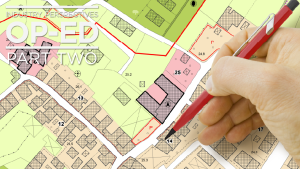Estimates suggest that stolen equipment and supplies from Canadian construction jobsites cost nearly half a billion dollars every year.
Whether it’s equipment or vehicles, tools or even building materials, construction sites are losing assets and resources at an alarming rate. Many contractors lose something on a daily basis. Not only is it not a surprise when it happens, but they often don’t even report it.

Traditionally, construction site crime involves theft of anything that would fit in a pickup truck, such as power tools, copper wiring and pipes, and other building supplies. In recent years, however, it has evolved to include expensive electronics like GPS systems and 3D measurement systems. There have also been ongoing reports of criminals organizing to target and drive off with larger equipment that typically comes with a six-figure price tag.
The theft is costly in a variety of ways. The most obvious is in the simple cost of replacing what’s missing. But missing tools and supplies lead to project delays that create additional costs, from wasted man-hours to increased expenses of rental equipment to an inability to move on to the next project.
With hundreds of thousands of dollars worth of equipment stored onsite, how should contractors and construction companies keep their sites secure?
Consider implementing the following five protocols:
- Permanently identify and inventory tools and equipment. It should be easy to identify your company’s belongings. If you can, use microdot identification technology systems, a state-of-the-art identification and security system, to label your property. Otherwise, use welders or etching tools to permanently affix the company name on everything, from equipment to vehicles. Don’t forget to mark attachments and removable parts separately. This helps firms identify and reclaim stolen property. Finally, make sure you have a master list of everything onsite, so missing equipment and tools can be identified more easily and to facilitate recovery.
- The more security, the better. The more defences you have built in, the harder it’ll be for criminals to break through. Start by locking a fully encapsulated building envelope. Add locked doors and climb-resistant fencing and prominently post surveillance warnings and notice of penalties to trespassers. Limiting the number of access points to the site is also helpful. If your site is in a high-crime area, it may be a cost-effective security measure to hire onsite guards. Abundant lighting of sites at night is critical and can also deter criminals effectively.
- Think technology. A variety of newer protocols can enhance security for every firm. All projects should consider motion-activated camera systems to monitor all angles and points of entry. SMS push notifications from the motion sensors can even provide project managers an alert in real-time. On larger construction sites, internet-enabled tags equipped with sensors can monitor equipment in real time. Other Internet of Things (IoT)-inspired solutions track indoor, outdoor and equipment motion, as well as fire, water and humidity levels. Tracking equipment with GPS is another option, but make sure your installer hides the GPS tracker so that it’s not easily located and disabled.
- Limit the mobility factor. Easily portable and drivable equipment needs extra attention. Put generators, welders and smaller equipment behind locked doors, such as inside a Connex box or inside the building envelope. The most commonly stolen equipment includes skid-steer loaders and tractors, so consider solutions like hydraulic locks and options for hidden disconnects.
- Storage matters too. Adequate, secured storage is another must. Gang boxes should have enclosed and recessed locking points and locks that can’t be drilled open. Wheels on gang boxes should be removed, and boxes should be locked down once they’ve been set onsite. Workers should bring all equipment back to the shop whenever possible to avoid bringing tools home or even leaving them in a vehicle where they are more vulnerable.
Sarah Spohr, NSCO, ABCP, is the risk services leader for global insurance brokerage Hub International’s national construction practice and is based in Calgary, Alta. Sarah has over 15 years of occupational health and safety experience working with high profile aerospace, construction, manufacturing and energy processing operations.
Send comments and Industry Perspectives op-ed ideas to editor@dailycommercialnews.com.









Good afternoon I am employed with Merit Contractors association as health and Safety for our members. Merit contactors supplies benefits for over 1700 construction members across the province of Alberta as a well as other provinces.
this topic of theft as always been an issue with our members, i would like more information on this to pass on to our members.
I can be contacted via my email or cell phone.
Regards, Ward Soanes CRST, NCSO, QSR